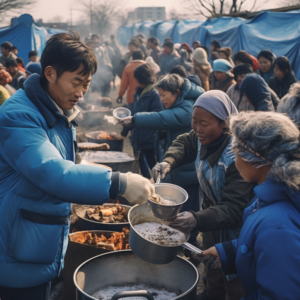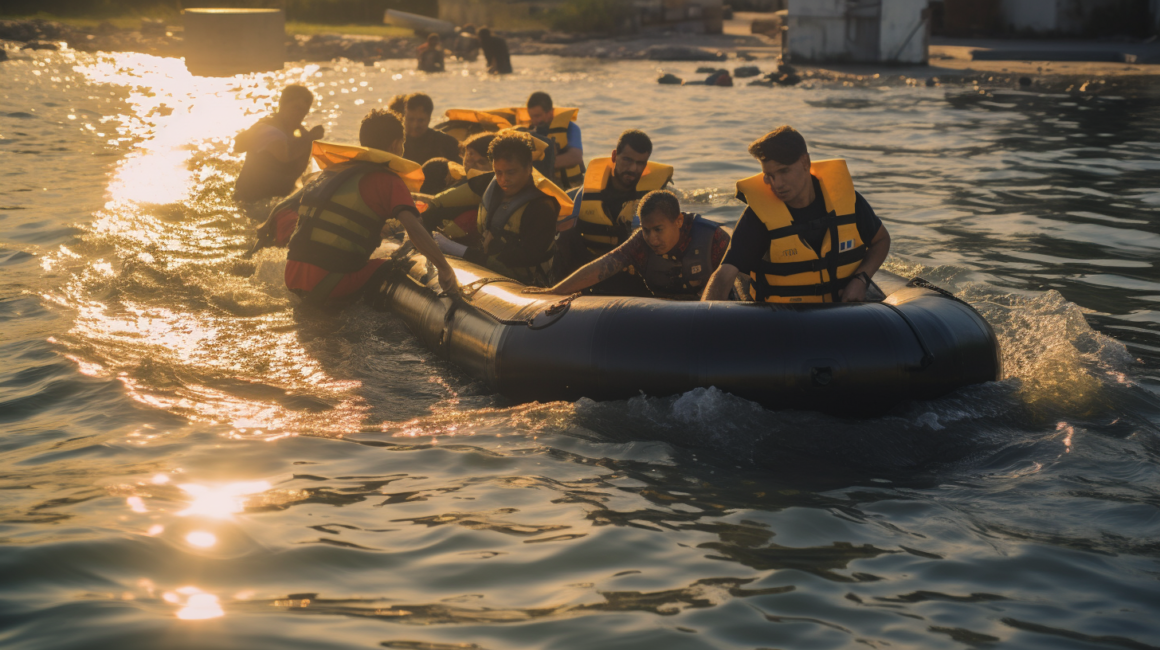Q: IDRN emphasizes the grassroots aspect of our network. Why?
A: Most disaster response efforts could benefit from more informed grassroots engagement.
First, let us revisit things that are opposite of grassroots. Top-down. Highly structured. Corporate. Government. Elite. An establishment or power structure proactively shaping a culture or society with an agenda. Whatever word one uses, the understanding is that there is power, control, resources, organization, agendas, and the ability to “make things happen.”
 In the disaster response world, large groups like governments, the United Nations, and large NGOs immediately dominate most people’s thinking. Why? That is because they typically have vast resources, experience, coordination, and systems in place that “handle” disasters. The positive sides of these groups are undeniable. However, a basic understanding of human nature and history must include the awareness that such large structures are home to corruption, waste, and a tendency towards lack of personal investment or care. To be clear, any corporate group will have good and bad dynamics simultaneously. Also, it is obvious there are a lot of good people with good intentions doing good things through such structures.
In the disaster response world, large groups like governments, the United Nations, and large NGOs immediately dominate most people’s thinking. Why? That is because they typically have vast resources, experience, coordination, and systems in place that “handle” disasters. The positive sides of these groups are undeniable. However, a basic understanding of human nature and history must include the awareness that such large structures are home to corruption, waste, and a tendency towards lack of personal investment or care. To be clear, any corporate group will have good and bad dynamics simultaneously. Also, it is obvious there are a lot of good people with good intentions doing good things through such structures.
So, why then emphasize grassroots when they can suffer from the exact opposite issues that are clearly strengths of the structures and groups that are prevalent? Even though it is not always true, it is likely that grassroots initiatives have limited resources, less expertise, less or no coordination, and no goal-specific systems. And since grassroots, by definition, exist at the everyday person’s level, we know that people have been and will continue to be capable of personally bringing their own corruption, waste, and lack of care. That sounds awful – the worst of all worlds!
And yet, many believe that grassroots efforts can achieve much higher levels of sensitivities to their local cultures and needs. They know. They live there. They know the history and the on-going dynamics. Grassroots collectives are often powered by those who care the most about their communities; by people who love their neighbors and are not motivated by personal gain or simple heartless inertia. Also, they have to “live with” the consequences of their actions long after outsiders leave. It is true that “common people” are often not as trained with skills specific to unique needs common in disasters. Still, they often are better connected to the best solutions because of their common sense understanding of the local realities. And when grassroots people lend a hand – either from adjacent communities or on the other side of the planet – they relate more on a personal level with those experiencing the trauma directly.
IDRN does not see our growing grassroots network as superior to the other existing groups. That would be absurd.  It is our belief that the existing larger, better funded, better trained groups are vital – even while not perfect. IDRN desires to weave a loose web of motivated people – both professionals and “common folk” who are tied to their local communities. Through this weaving process, we hope to interject best practices and start people on a path towards more and better collaboration. This includes when and where IDRN can connect beginners with other existing groups. IDRN can magnify everyone’s contributions to disaster and crisis response by creating a nurturing space through which IDRN helps people to connect, learn about, and do more effective disaster response without having to become a full-time disaster response worker.
It is our belief that the existing larger, better funded, better trained groups are vital – even while not perfect. IDRN desires to weave a loose web of motivated people – both professionals and “common folk” who are tied to their local communities. Through this weaving process, we hope to interject best practices and start people on a path towards more and better collaboration. This includes when and where IDRN can connect beginners with other existing groups. IDRN can magnify everyone’s contributions to disaster and crisis response by creating a nurturing space through which IDRN helps people to connect, learn about, and do more effective disaster response without having to become a full-time disaster response worker.
Grassroots initiatives are often raw and lack sophistication in ways that can be counterproductive. Knowing this, IDRN seeks to maximize the benefits for grassroots level people and their efforts by adding just a touch of coordination through awareness of one another and industry best practices. That includes facilitating connection points and highlighting excellence when it is found in the existing groups around the world – including some of the large mega-groups that are the antithesis of grassroots in identity or approach.
Grassroots people engage differently than people who live far away and who are paid to be there. That is not to say paid professionals do not care. But it is undeniable that paid professionals are fundamentally different than grassroots contributors. In a crisis, both are needed. Therefore, we are building IDRN.
In the end, I hope anyone reading this can appreciate that I’m not advocating one over another. We all need one another in more ways than one. That is the main point.
J Matt Wallace, IDRN Global, Executive Director

